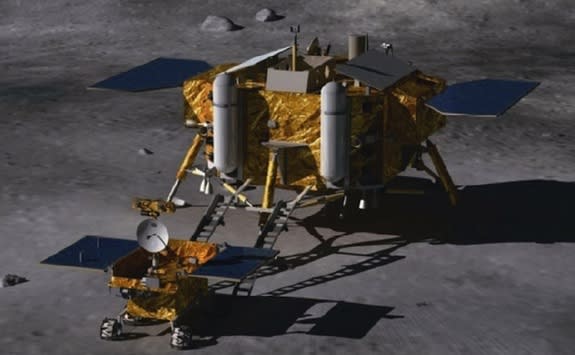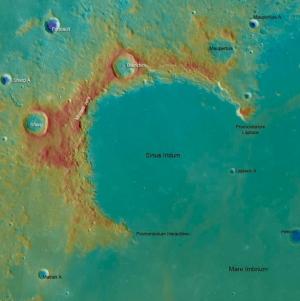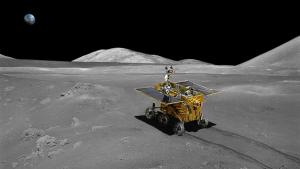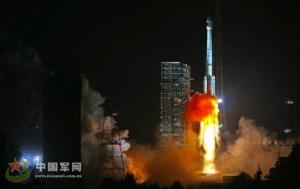Chennai, India

FINAL SCORE: Carlsen 6½; Anand 3½
Reference: game collection Anand-Carlsen WCC 2013
The World Chess Championship 2013 was a match between the defending world champion Viswanathan Anand of India and challenger Magnus Carlsen of Norway, winner of the 2013 World Championship Candidates Tournament.
 | |
| Carlsen opening with 1.c4 in critical round five. |
The match gathered record-setting TV audiences in Anand's home country of India, and huge interest around the world. It took place from November 7-22 at the Hyatt Regency Chennai. Carlsen won the match 6.5 to 3.5, after ten of the twelve scheduled games.
The match started with on a timid tone, with both players employing extremely solid opening strategies, perhaps to conceal the bulk of their opening preparation. Carlsen opened games 1 and 3 with 1.Nf3, a move that he historically has seldom employed.
Carlsen was the first to draw blood in game 5 as he turned a tiny advantage from a Queen's Gambit into a powerful ending. The pressure continued in game 6 when Anand's Ruy Lopez went wrong and Carlsen again achieved a win. In game 9 Anand finally found what he was seeking: a complex position with good winning chances, but his attack went wrong after 28.Nf1? which lost immediately.
Three games down coming into round 10, the match was all but over for Anand, and a hard fought draw in game 10 finished the match at only 10 games, making Magnus Carlsen the 16th undisputed World Chess Champion.
|
FINAL SCORE: Carlsen 6½; Anand 3½
Reference: game collection Anand-Carlsen WCC 2013
NOTABLE GAMES [what is this?]
| · Game #9 | Anand vs Carlsen, 2013 | 0-1 | |||
| · Game #6 | Anand vs Carlsen, 2013 | 0-1 | |||
| · Game #5 | Carlsen vs Anand, 2013 | 1-0 | |||
Chennai , India
El Campeonato Mundial de Ajedrez 2013 fue un partido entre el campeón del mundo Viswanathan Anand de la India y el retador , Magnus Carlsen de Noruega , ganador de los 2.013 candidatos del Campeonato del Mundo de Torneos .
Anand , Carlsen 2013
Apertura Carlsen con 1.c4 en la ronda crucial cinco.
El partido reunió a las audiencias de televisión de récord en el país natal de Anand de la India, y un enorme interés en todo el mundo . Se llevó a cabo del 7 al 22 noviembre en el Hotel Hyatt Regency Chennai. Carlsen ganó el partido 06.05 a 03.05 , después de diez de los doce partidos programados.
El partido comenzó con un tono tímido , con ambos jugadores el empleo de estrategias de apertura extremadamente sólidas , tal vez para ocultar la mayor parte de su preparación inicial. Carlsen abrió los juegos 1 y 3 con 1.Cf3 , un movimiento que históricamente rara vez se ha utilizado.
Carlsen fue el primero en extraer la sangre en el juego 5 cuando se volvió una pequeña ventaja de un Gambito de Dama en un final de gran alcance. La presión continuó en el juego 6 de Anand cuando Ruy López salió mal y Carlsen consiguió de nuevo una victoria. En el juego de 9 Anand finalmente encontró lo que buscaba : una posición compleja , con buenas posibilidades de ganar , pero su ataque fue mal después 28.Nf1 ? que perdió inmediatamente.
Tres juegos abajo llegan a la ronda de 10 , el partido estaba casi terminado para Anand, y un empate muy reñida en juego 10 terminó el partido en sólo 10 juegos , por lo que Magnus Carlsen en el Campeón del Mundo indiscutible 16a .
Ченнаи, Индия
Чемпионат мира по шахматам 2013 был матч между действующим чемпионом мира Вишванатан Ананд из Индии и претендентом Магнус Карлсен из Норвегии , лауреат 2013 чемпионата мира турнир претендентов .
Ананд Карлсен 2013
Карлсен открытие с 1.c4 в критическом пятом раунде .
Матч собрал рекордные телезрителей в стране Ананда из Индии, и огромный интерес во всем мире. Он проходил с ноября 7-22 в Hyatt Regency Ченнаи. Карлсен выиграл матч 6,5 до 3,5, после десяти из двенадцати запланированных игр.
Матч начался с на робким тоном , с обоих игроков используя чрезвычайно твердые стратегии открытия , возможно , чтобы скрыть большую часть своей дебютной подготовки . Карлсен открыл игры 1 и 3 с 1.Nf3 , шаг, который он исторически редко используемой .
Карлсен был первым до крови в игре 5 , когда он повернулся крошечный преимущество от гамбитаКоролевы в мощный финал. Давление продолжали в игре 6, когда Ананда Испанская партия пошло не так и Карлсен снова достигнут выигрыш. В игре 9 Ананд наконец нашел то, что искал : сложную позицию с хорошими шансами на победу , но его атака пошло не так после 28.Nf1 ? который потерял сразу .
Три игры вниз вступления в 10-м раунде , матч был почти над для Ананда , итрудно бороться ничья в игре 10 закончил матч всего в 10 играх , что делает Магнус Карлсен 16-й бесспорным чемпион мира по шахматам .
Все игры
Chennai, Indiya
Chempionat mira po shakhmatam 2013 byl match mezhdu deystvuyushchim chempionom mira Vishvanatan Anand iz Indii i pretendentom Magnus Karlsen iz Norvegii , laureat 2013 chempionata mira turnir pretendentov .
Anand Karlsen 2013
Karlsen otkrytiye s 1.c4 v kriticheskom pyatom raunde .
Match sobral rekordnyye telezriteley v strane Ananda iz Indii, i ogromnyy interes vo vsem mire. On prokhodil s noyabrya 7-22 v Hyatt Regency Chennai. Karlsen vyigral match 6,5 do 3,5, posle desyati iz dvenadtsati zaplanirovannykh igr.
Match nachalsya s na robkim tonom , s oboikh igrokov ispol'zuya chrezvychayno tverdyye strategii otkrytiya , vozmozhno , chtoby skryt' bol'shuyu chast' svoyey debyutnoy podgotovki . Karlsen otkryl igry 1 i 3 s 1.Nf3 , shag, kotoryy on istoricheski redko ispol'zuyemoy .
Karlsen byl pervym do krovi v igre 5 , kogda on povernulsya kroshechnyy preimushchestvo ot gambitaKorolevy v moshchnyy final. Davleniye prodolzhali v igre 6, kogda Ananda Ispanskaya partiya poshlo ne tak i Karlsen snova dostignut vyigrysh. V igre 9 Anand nakonets nashel to, chto iskal : slozhnuyu pozitsiyu s khoroshimi shansami na pobedu , no yego ataka poshlo ne tak posle 28.Nf1 ? kotoryy poteryal srazu .
Tri igry vniz vstupleniya v 10-m raunde , match byl pochti nad dlya Ananda , itrudno borot'sya nich'ya v igre 10 zakonchil match vsego v 10 igrakh , chto delayet Magnus Karlsen 16-y besspornym chempion mira po shakhmatam .
Vse igry
Chennai , Inde
Le Championnat du monde d'échecs 2013 a été un match entre le champion du monde en titre Viswanathan Anand de l'Inde et challenger Magnus Carlsen de Norvège , vainqueur du Championnat du Monde 2013 Tournoi des Candidats .
Anand Carlsen 2013
Carlsen ouverture avec 1.c4 au tour critique cinq .
Le match a rassemblé les téléspectateurs de records dans le pays d' Anand de l'Inde , et un énorme intérêt dans le monde entier . Il a eu lieu du 7-22 Novembre à l'hôtel Hyatt Regency Chennai . Carlsen a gagné le match 6.5 à 3.5 , après dix des douze jeux réguliers .
Le match a commencé avec un ton timide , avec deux joueurs en utilisant des stratégies d'ouverture extrêmement solides , peut-être pour cacher la majeure partie de la préparation de leur ouverture . Carlsen a ouvert les jeux 1 et 3 avec 1.Nf3 , un mouvement qu'il a historiquement rarement utilisé .
Carlsen a été le premier à tirer du sang dans le jeu 5 en se tournant un petit avantage de la manoeuvre de la Reine dans une fin puissante . La pression a continué dans le jeu 6 quand Ruy Lopez Anand s'est mal passé et Carlsen à nouveau réalisé une victoire . Dans le jeu 9 Anand a enfin trouvé ce qu'il cherchait : une position complexe avec de bonnes chances de gagner, mais son attaque a mal tourné après 28.Nf1 ? qui a perdu immédiatement.
Trois jeux en bas entrée en ronde de 10 , le match était presque terminée pour Anand , et un tirage dur combat dans le jeu 10 terminé le match à seulement 10 jeux , ce qui Magnus Carlsen incontesté champion du monde d'échecs 16 .
tous les jeux









